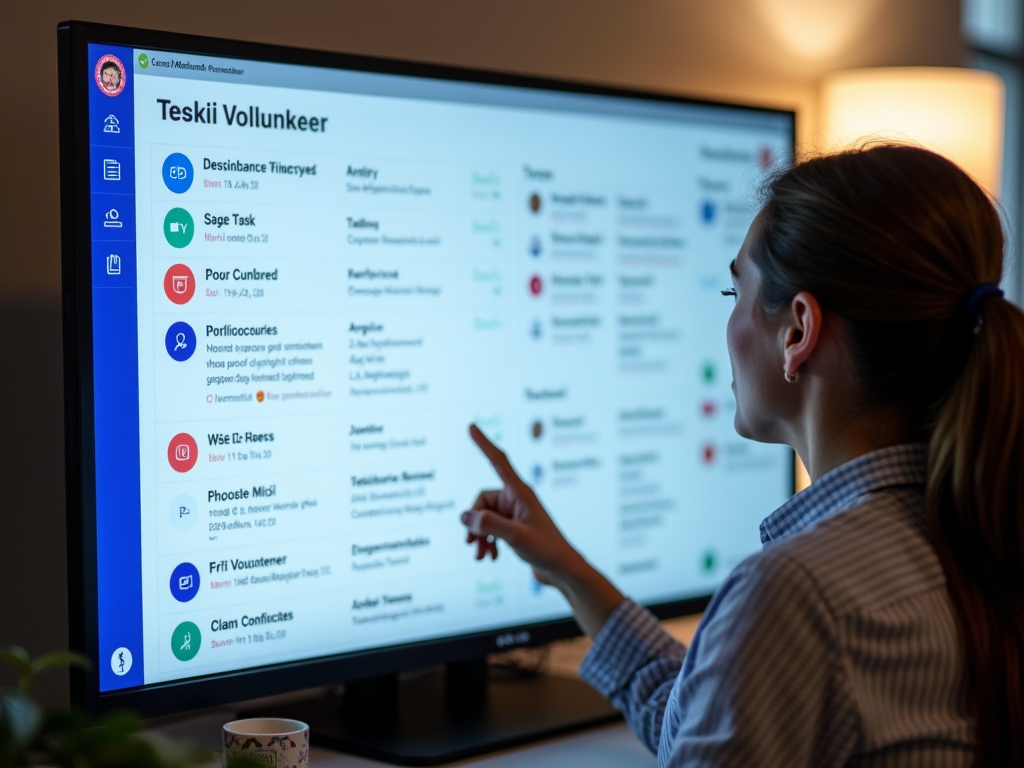Volunteer Management: Best Practices for Campaign Coordinators
By , March 19, 2025
Volunteer management is a critical aspect of running successful political campaigns and advocacy efforts. Effective management of volunteers can significantly enhance a campaign's reach, impact, and overall success. This article explores best practices for campaign coordinators to manage volunteers efficiently, ensuring their contributions are maximized and aligned with the campaign's objectives.
The Importance of Volunteer Management in Campaigns
Volunteers are the backbone of many political campaigns and advocacy initiatives. They provide essential support in various areas, from canvassing and phone banking to event organization and social media outreach. Effective volunteer management ensures that these efforts are coordinated, efficient, and aligned with the campaign's goals. Poor management, on the other hand, can lead to disorganization, wasted resources, and ultimately, a less effective campaign.
In my experience managing volunteers for a local advocacy campaign, I quickly realized that without a structured approach, even the most enthusiastic volunteers could become disorganized and less effective. By implementing clear roles, regular training sessions, and consistent communication, we were able to streamline our efforts and achieve our campaign goals more efficiently.

Strategies for Recruiting Volunteers
Recruiting the right volunteers is crucial. Campaign coordinators should focus on attracting individuals who are passionate about the cause and willing to commit their time and energy. Here are some effective strategies:
- Leverage Social Media: Use platforms like Facebook, Twitter, and Instagram to reach potential volunteers. Share compelling stories and visuals that highlight the impact of volunteering.
- Host Information Sessions: Organize events where interested individuals can learn more about the campaign and the volunteer opportunities available.
- Partner with Local Organizations: Collaborate with community groups, universities, and other organizations to tap into their networks and recruit volunteers.
- Offer Incentives: While volunteers are typically unpaid, offering small incentives like t-shirts, certificates, or recognition can motivate people to join.
I once organized a recruitment drive for a political campaign by hosting a series of community meetups. These events not only attracted a diverse group of volunteers but also fostered a sense of community and shared purpose, which was invaluable for the campaign's success.

Training and Onboarding Volunteers Effectively
Once volunteers are recruited, it's essential to provide them with the necessary training and resources to perform their roles effectively. This includes:
- Orientation Sessions: Introduce volunteers to the campaign's mission, goals, and values.
- Role-Specific Training: Provide detailed training on the tasks they will be performing, such as canvassing techniques or social media management.
- Resource Provision: Ensure volunteers have access to all the materials and tools they need, such as scripts, contact lists, and promotional materials.
- Mentorship Programs: Pair new volunteers with experienced ones to provide guidance and support.
In one campaign, we implemented a buddy system where new volunteers were paired with veterans. This not only helped new volunteers learn the ropes quickly but also built a strong sense of camaraderie within the team.

Motivating and Retaining Volunteers
Keeping volunteers motivated is key to retaining them throughout the campaign. Here are some strategies:
- Recognition and Appreciation: Regularly acknowledge and celebrate volunteers' contributions, whether through public recognition, awards, or simple thank-you notes.
- Provide Opportunities for Growth: Offer volunteers the chance to take on more responsibilities or leadership roles as they gain experience.
- Create a Positive Environment: Foster a supportive and inclusive atmosphere where volunteers feel valued and heard.
- Regular Feedback: Provide constructive feedback and encourage volunteers to share their thoughts and suggestions.
I found that hosting regular volunteer appreciation events, even simple gatherings like pizza parties, significantly boosted morale and retention. It showed volunteers that their hard work was recognized and valued.

Coordinating Volunteer Activities and Ensuring Alignment with Campaign Goals
Effective coordination ensures that volunteer efforts are aligned with the campaign's objectives. This involves:
- Clear Communication: Maintain open lines of communication to keep volunteers informed about campaign updates, goals, and strategies.
- Task Assignment: Assign tasks based on volunteers' skills, interests, and availability.
- Scheduling: Use tools like shared calendars or scheduling apps to manage volunteer shifts and avoid overlaps or gaps.
- Monitoring Progress: Regularly check in with volunteers to monitor their progress and provide support as needed.
In a recent campaign, we used a project management tool to assign tasks and track progress. This not only kept everyone on the same page but also allowed us to quickly identify and address any issues that arose.

Measuring and Evaluating Volunteer Performance
Evaluating volunteer performance helps identify areas for improvement and recognize outstanding contributions. This can be done through:
- Performance Metrics: Set clear, measurable goals for volunteer activities, such as the number of doors knocked or calls made.
- Feedback Sessions: Conduct regular feedback sessions to discuss performance and areas for improvement.
- Surveys: Use surveys to gather volunteers' feedback on their experience and suggestions for improvement.
We implemented a simple feedback form after each volunteer shift, which allowed us to gather real-time insights and make adjustments on the fly. This proactive approach helped us maintain high levels of volunteer satisfaction and performance.

Handling Challenges and Conflicts in Volunteer Management
Challenges and conflicts are inevitable in any volunteer program. Effective management involves:
- Proactive Communication: Address issues promptly and transparently to prevent escalation.
- Conflict Resolution Training: Provide training for volunteer leaders on how to handle conflicts effectively.
- Clear Policies: Establish clear policies and procedures for handling grievances and disciplinary issues.
- Support Systems: Ensure volunteers have access to support systems, such as a designated contact person for raising concerns.
In one instance, we faced a conflict between two volunteers over task assignments. By facilitating an open discussion and reassigning tasks based on their preferences, we were able to resolve the issue amicably and maintain team harmony.

Summary
Effective volunteer management is crucial for the success of political campaigns and advocacy efforts. By implementing best practices in recruiting, training, motivating, and coordinating volunteers, campaign coordinators can maximize their impact and achieve their goals. Remember, volunteers are not just helpers; they are the heart and soul of your campaign.